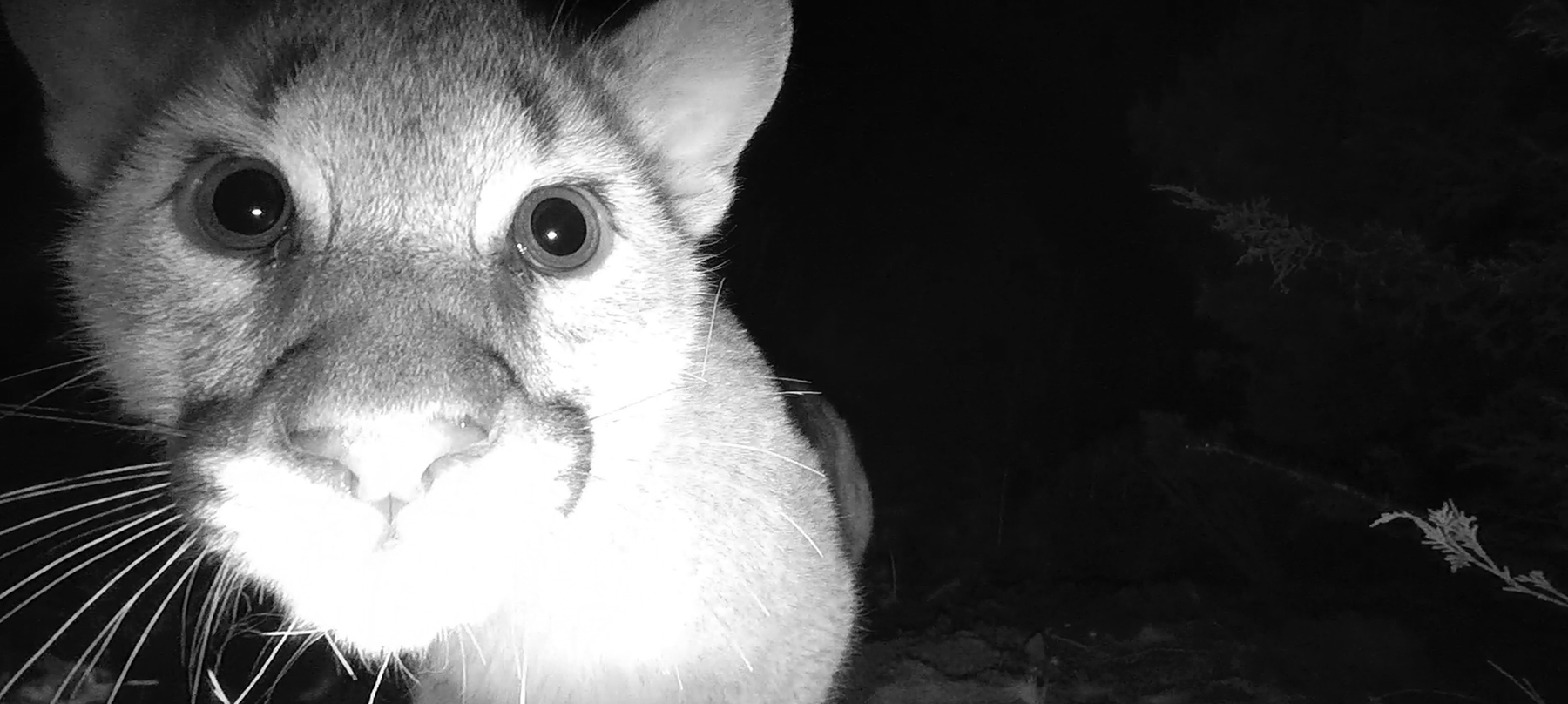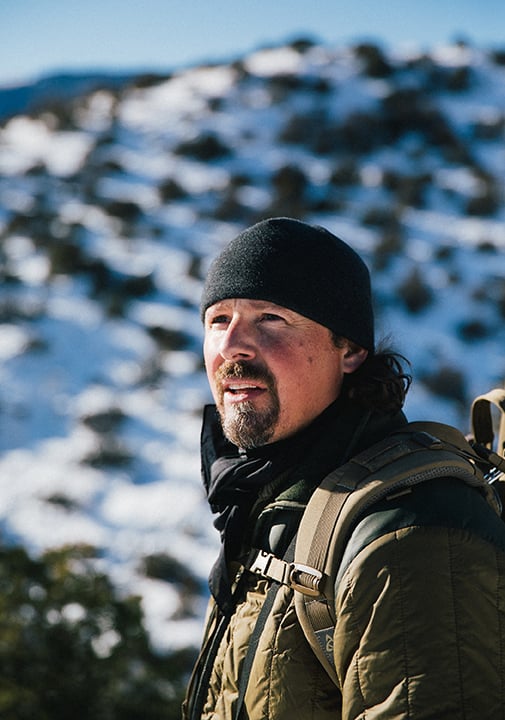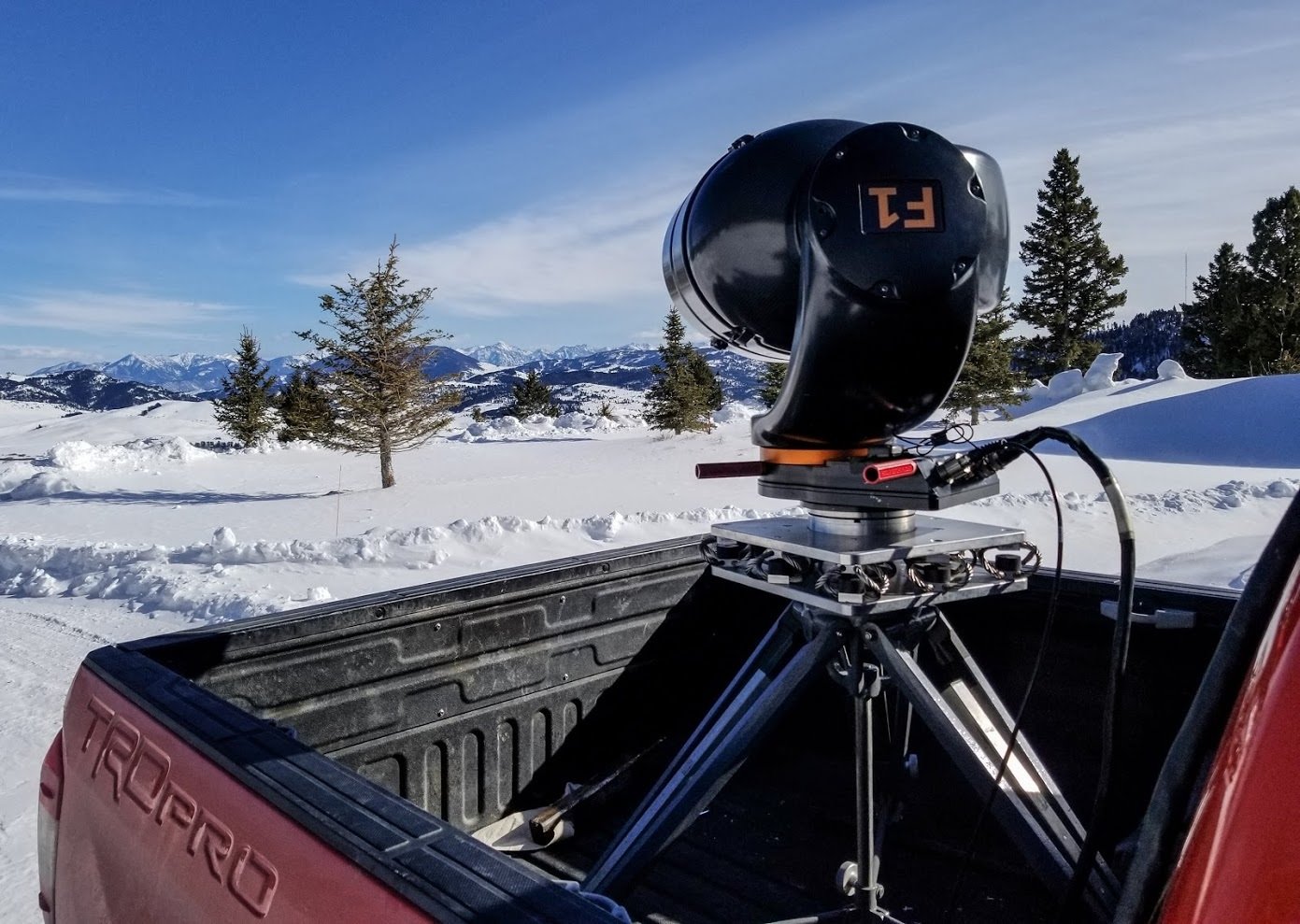
Stalking Big Cats: The Mountain Lion and Me
From GoPros to Red Epic Dragons, doumentarian Casey Anderson details his diverse approach to photographing the most elusive predators in North America.
From GoPros to Red Epic Dragons, doumentarian Casey Anderson details his diverse approach to photographing the most elusive predators in North America.

On a freezing night near his home in Paradise Valley, Montana, wildlife filmmaker Casey Anderson huddled in a nylon tent pitched within an abandoned barn strewn with animal bones and carcasses.
Shooting with a Red Epic Dragon camera amped up with an infrared filter and a Canon 200-400mm lens, Anderson hoped to capture images of one of the most elusive predators in North America: a mountain lion whose tracks he had followed from his own front yard.
For hours, he waited in the darkened structure as the walls creaked in the wind. “It felt like I had walked into a serial killer’s basement,” says Anderson, 42, via phone from his home in the Big Sky state.
But his patience paid off. Around 1:00 am, a female lion showed up, dragging a 200-pound Mule deer. She had recently given birth and apparently had been using the lair as a safe place to stash her kills.
A dozen Reconyx UltraFire covert camera traps mounted at multiple angles captured even more footage of the feline in action.

The resulting images make up one of the most powerful sequences in Anderson’s new one-hour documentary The Mountain Lion and Me, which will air on various dates on the Smithsonian Channel through April 21. At the same time, Smithsonian Earth will stream Casey Anderson’s Wild Tracks, a series of six episode shorts further exploring wildlife in the area (stream at Smithsonianearthtv.com).
Back in that barn around 2009, Anderson was wary but focused. He knew first-hand that mountain lions can be unpredictable. While shooting a TV commercial five years earlier, he had been mauled by an adult male he had helped raise in a sanctuary, requiring 70 stitches to close the wounds.

So when the female cougar — whom he would nickname Mama Mo — showed up that winter night, “a couple of things go through your head,” Anderson says. “It was like, ‘I’m really close to a really big animal.’ But in the moment, I didn’t want to blow the opportunity. I moved slowly, watched her behavior, and if she was looking at me I didn’t do anything stupid. You’re also thinking, ‘Is this stupid? Is she going to run away in that fight or flight choice or is she going to do the fight choice to defend her kill?’ So I was in self-preservation mode, but then I went into mission mode. I was there to tell this story and I would never forgive myself if I didn’t hit record, get her in sharp focus and shoot the sequence as beautifully as I could.”
What’s unique about his documentary is how much footage Anderson was able to capture of a wild mountain lion, along with her three cubs, whom he nicknamed Eeny, Meeny and Miney. While he had previously pitched a mountain lion documentary to television executives, they told him they didn’t commission them because every time they had tried, they would just get footage of people looking for a cat but never finding one. “The reason mountain lions are the way they are is because they’re invisible,” Anderson says.
“If we had the opportunity to film one three or four times over several months, we were lucky.”
Yet he wasn’t without ample experience tracking these predators and other animals.
A fifth-generation Montana native, Anderson grew up with parents who were avid naturalists. As soon as he was able to walk, his father took him on treks through the mountains to look for animals. Only occasionally did they glimpse a mountain lion, mostly in the distance. “But to know that somewhere out there were these big predatory cats – there was always this kind of mystery around them,” he says.
As Anderson majored in wildlife biology at Montana State University, he began helping other filmmakers track animals for projects set in Yellowstone National Park. Eventually, one of the filmmakers handed Anderson a digital camera and asked him to shoot additional footage himself.
His first credit as a filmmaker came about with his work on the 1996 series Safari, set in Africa, for the Outdoor Channel. Anderson went on to make a name for himself on projects including an episode of National Geographic’s Expedition Wild, in which he starred alongside his rescued bear, Brutus, to understand the lives of Grizzlies living in Yellowstone National Park. He then became the host and executive producer of Nat Geo Wild’s long-running series America the Wild.
Over the years, he managed to shoot glimpses of mountain lions, but “If we had the opportunity to film one three or four times over several months, we were lucky,” he says.
Yet Anderson did not give up on his dream of creating an in-depth documentary on the big cats. “It was a personal obsession, as well as being told over and over that you can’t do a mountain lion documentary,” he says of his preoccupation. Some filmmakers had managed to shoot the cats by affixing them with radio collars, but Anderson preferred a more organic approach.

In the winter, he’d drive hundreds of miles a day — literally — looking for cougar paw prints in the snow. After one unsuccessful sojourn in 2009, he arrived home around midnight to a startling sight: the tracks of an adult mountain lion just outside his front door. “It was like picking up a random piece of paper that turned out to be a winning lottery ticket,” he says. Anderson promptly donned a headlamp and grabbed his compact Canon XA25 camcorder, which shoots in 4K and boasts a 20x optical zoom, to capture the tracks as he followed them through the snow.
During the ensuing months, he continued to embark on grueling treks to search for Mama Mo and her cubs. To help find the mountain lions, he set up dozens of Reconyx camera traps as well as GoPro HERO 4s at the sites of Mama Mo’s paw prints or kills. Along the way, he enlisted the help of wildlife photographer Brad Orstead to capture images of the felines over a period of four years.
They utilized military-grade thermal-sensing FLIR cameras to track the family day or night.
Initially, Anderson’s goal was simply to capture the cats in the frame, but as he began to get many such images, he invested in high-tech equipment that also could provide the movie with “beauty shots.” Among other tools, he purchased two Epic Red Dragons: “We had a camBLOCK Adventure motion-control sliding system so we could do really dynamic landscape and time-lapse shots, like seasonal changes,” he says.


Anderson mounted the other Red Dragon on a Shotover F1 gyro-stabilizing camera system, intended for helicopter shots, and placed the rig on top of his truck. “I could be driving down a bumpy dirt road following Mama Mo and not have to stop, get out and set up the camera,” he says. A Canon 50-1000mm zoom allowed Anderson to shoot the cats whether they were 20 feet or a mile away, without the animals appearing just as a speck in the frame or affecting their behavior.


At one point, Anderson crawled into one of Mama Mo’s dens — a tunnel-line cave — when she had temporarily left the site. “I used a GoPro HERO4 “because when I attached it to a stick I could crawl in there and shoot 4K,” he says. “One of the things beyond just getting quality footage is just the ability to get places,” he added. “I would have loved to shoot on an Alexa, but you can’t attach an Alexa to a stick and crawl into a cave.”
When one of the cubs suffered an injury and was lying close to a road, Anderson chose not to go in for close-up shots to avoid further traumatizing the animal.
Following the suffering cub was one of the most personally challenging parts of the shoot. “But we knew we had to tell that story as it was and the truth of nature,” Anderson says.
Today, Mama Mo’s cubs are on their own and Anderson recently found her tracks meandering around his property.
“Just because we don’t see and get to know these animals every day doesn’t mean we shouldn’t care about them,” he says. “My hope is that without preaching anything, [viewers] will fall in love with these characters, as with any other film, and look at them in a different way.”







